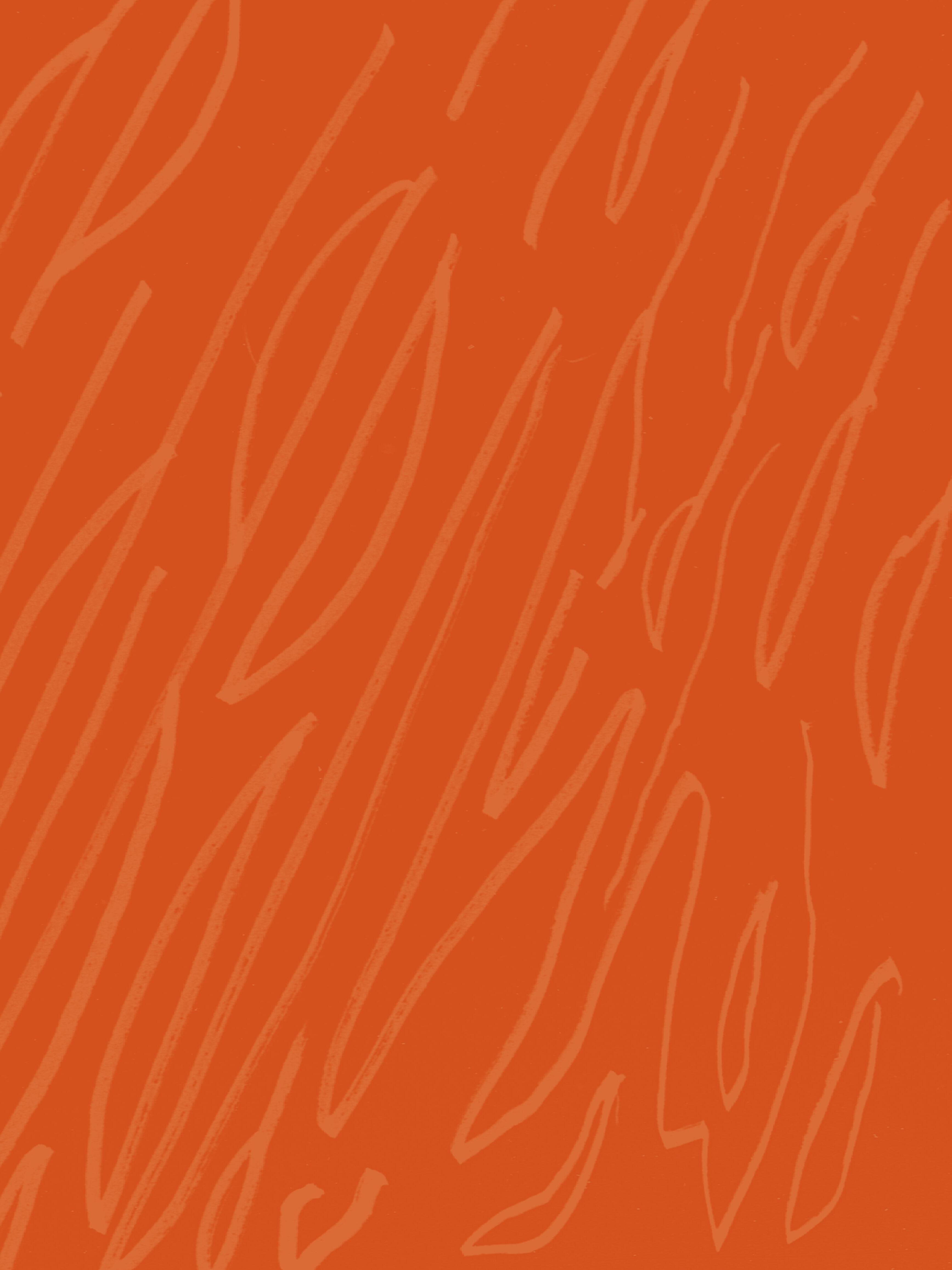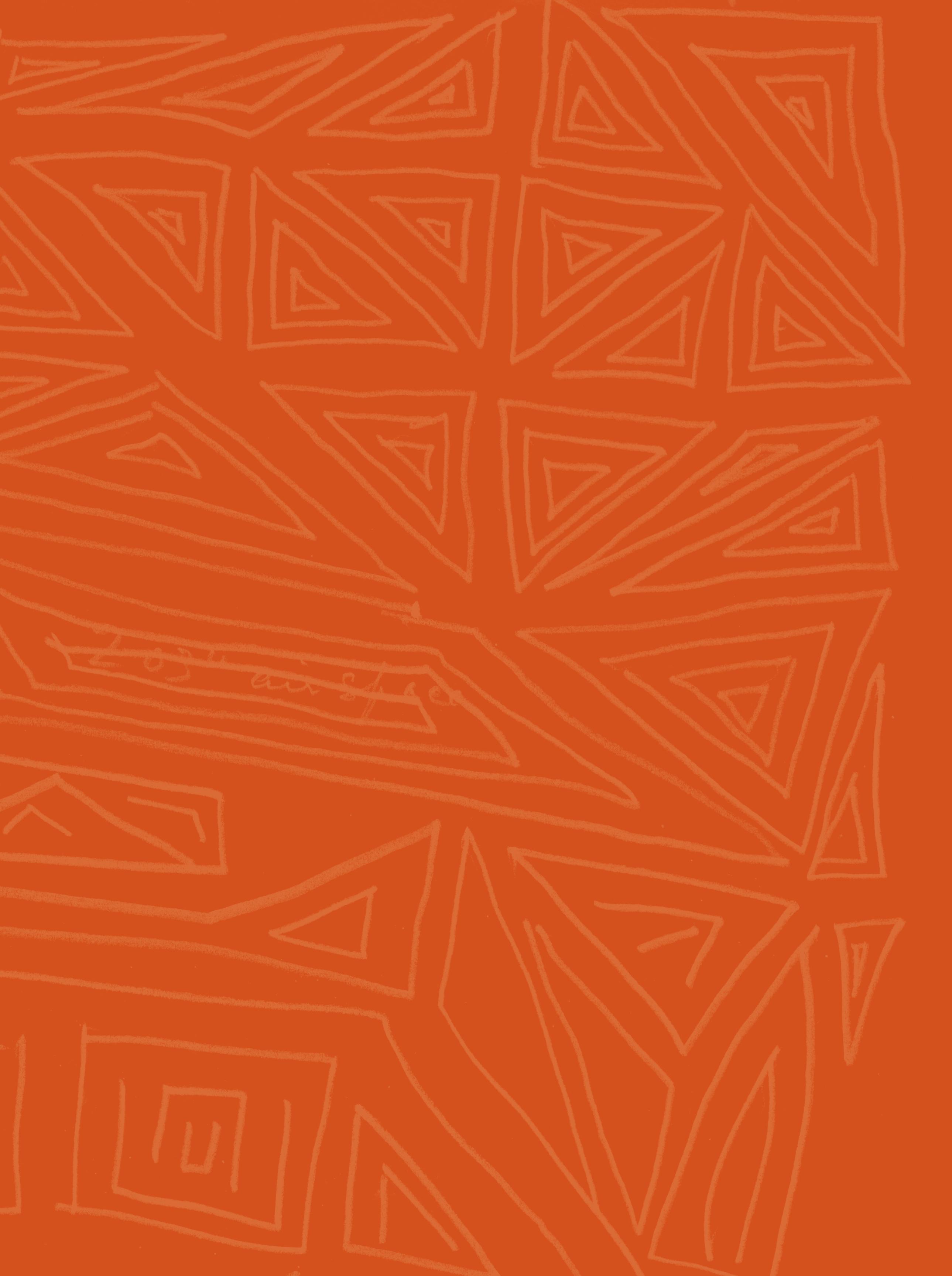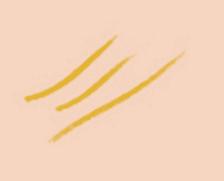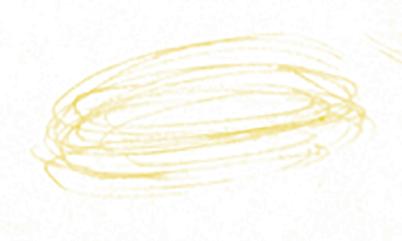

Art Gallery | Len Lye Centre
The Len Lye
Art Activity Book
 Rebecca Fawkner
Govett-Brewster
Rebecca Fawkner
Govett-Brewster


Introduction 6 Kick-off 13 Crazy about motion 25 The ‘A-ha!’ moment 36 Modern Art here I come 50 Making movies 60 Art that moves 81 Sculpture for everyone 98 Set your ‘old brain’ free 139 Len Lye timeline 162 Thanks! 165 About the author 166 Image credits 166
This book is about you. It is also about the artist Len Lye and how you can explore the world through his ideas.


6
Just like you, Len started being an artist when he was a kid. Len was full of energy and enthusiasm. He experienced the world using all his senses — sight, sound, smell, touch and taste. He didn’t think that art just sat on paper or stood in a gallery. He believed that art moved, art felt, art experimented, that art was noisy, art was in the footpath cracks and art was in outer space.
Len believed that we are all born with imagination and art talent. He found many different ways to be an artist. He made up different types of games and activities, and he tried out lots of ways to turn his ideas into art. He shared these with his students later in his life.


This book has 65 Len Lye-inspired ways to be an artist. Try them out and have O O Z L E S * of fun!
* Oozles is one of Len’s many made-up words. There are lots of them in this book. This book also has oozles of Len’s doodles.
 Len Lye in Sydney, 1925.
Len’s sculpture Roundhead (1960) in action.
Len Lye in Sydney, 1925.
Len’s sculpture Roundhead (1960) in action.
Drawing, painting, film-making, photography without cameras, moving sculpture, writing, dancing . . . Len experimented with many different ways of making art. He would take his time and re-do the same picture many times, seeing whether different colours or different shapes made it more interesting. He believed that having lots of fun trying things out was the key to becoming an artist.
His experiments in one type of art-making also helped him make art in another. He made artwork all over the world, including Aotearoa New Zealand, Australia, England, Canada, Spain, America and Puerto Rico. His works are in some of the most famous Modern Art museums around the world. Now most of his work is in Aotearoa New Zealand, the country where he was born. You can find them in the Len Lye Centre at the Govett-Brewster Art Gallery in Ngāmotu New Plymouth.

Len was an artist every moment of his life and his mission to make art continues on. This is because he left a lot of plans, drawings and notes for other artists and engineers to continue his great ideas. When he died, his workshop was packed up, and its contents are now stored in an archive at the Len Lye Centre in Ngāmotu New Plymouth.
As you make your way through this book, you will meet many objects that live in that archive.


8
Len called unplanned drawings like these doodles.
How to use thi s b o o k
Since 1977, young people visiting the GovettBrewster Art Gallery in Ngāmotu New Plymouth have been wowed by Len Lye’s art. They may have met his art on a gallery visit with their whānau, or they may have had fun making creations at a gallery holiday programme. Or perhaps they were introduced to Len’s art on a school visit and then dug deeper into the science or ideas behind his sculpture, film, painting or poetry.
This book shares some of these fun experiences with you to try at home. The order of the activities follows Len through his life, and each activity shows how Len made a place for himself in the art world. On the way, these activities will help you find your place, too.
About a hundred years ago Len left Aotearoa New Zealand to follow his art dream. Today, the world is very different, so some of this book’s activities inspired by his art might have given him a surprise. We hope he would have approved, though, and even given them a go himself!

9
Some activities ask you to draw or paint straight onto the pages of the book. For others, you will need to make something, or move your body, or find a friend or family member to help you understand a tricky word or idea. You are allowed to cross out, scribble over, start all over again — just as long as you keep ‘arting’.

Len Lye was always full of wonder and curiosity. Imagination was his key to life. For this book we have invented a symbol to encourage you to use your own ‘art-mind’. In the art gallery we call it an IMAGINATION BUTTON and it looks like this:
Of course, you’ll be using your imagination all through this book, but the button will pop up now and again when an extra imagination boost will help, or — as Len put it — you need to open a new ‘mind door’. So let’s start. Here’s the first activity for you to try!

10
Let’s get ready with the Ziggle Imagination Tester
Just like oozles , ziggle is one of the fun words Len loved to use. At times ordinary words couldn’t describe exactly what he wanted to say, so he made up better ones. He first used the word ziggle when talking about the ‘ziggle-zagsplutter scratches’ of his 1958 film Free Radicals. What is imagination and where does it come from? Is it the same for everyone? Use this fun experiment to test yourself, then try it on others. Record what you discover in a drawing.
Stand up straight, put your hands out in front of you and Z I G G L E them.
Count 1 . . . 2 . . . 3 . . . then put your hands on your body to show where your imagination comes from. Choose a colour that stands for you and draw a ziggle on the figure below to show where your imagination lives.

Try this on someone else. Did they put their hands in the same place as you? Choose a different colour and add a ziggle to show their answer. Keep testing people at home and at school. If you run out of colours, use patterns as well.


11


-
Learning about Len

Leonard Charles Huia Lye was born on 5 July 1901 in Ōhinehou Lyttelton near Ōtautahi Christchurch. His family were Pākehā. Rose, his Irish mother, gave Len a Māori middle name, ‘Huia’, after a clever warrior chief who had bravely led his people against the British army. His father, Harry, was a barber. They had a happy life together, but they had to work hard to get by. Sadly, when Len was three and his younger brother Phillip was one, their father died of tuberculosis and their lives were turned upside down.
Rose had to take on jobs such as housekeeping and cleaning. She couldn’t have her young sons with her at the homes she worked at, so the family was forced to be apart. It was a very difficult time, and Len and Phillip were moved around between other family members and foster families. They quickly learnt to look after themselves.
In time Len’s mother married again, and Len’s stepfather, Ford Powell, got a job as the assistant lighthouse keeper at the southernmost point of the Cook Strait at Cape Campbell. The brothers did not have much schooling, and after they had finished their chores they would go exploring.



14
Len’s father, Harry.
Len’s mother, Rose.
Len (right) with his brother, Phillip, in 1905.
Living at the lighthouse had a huge effect on Len. He called its flashing light beams ‘The Great Flasher’. Memories of the clockwork machines inside the tower that made the light work, and of the storms, the sea and the rock pools, stayed with him and inspired his obsessions with projecting light and moving sculpture.

The lighthouse staff and their families at Cape Campbell in 1909. Len is in the dark jacket sitting on the fence.

Len’s time at the lighthouse came to an unexpected and painful end when his stepfather became unwell and the family had to leave. Their lives changed again. Len’s mother had to find work once more, and for a time she couldn’t look after her sons, so Len and Phillip went to live with their Aunt Aggie and then with foster families.
Len missed his mother and the freedom of life at the lighthouse, but he also discovered a new love — drawing. This was a way he could be himself. If he was stuck inside the house, drawing helped him escape to a new happy place. The adults encouraged his new hobby because it kept him busy.

15
Cape Campbell lighthouse.
Learning about Len
Len drew and drew and drew, using photos as subjects. First movie stars and cowboys, and then boats, trees and horses. Nine-year-old Len wore down many pencils, and he saved up to buy his first sketch-book, ink and quill pen.


Later in his life Len said that a young person who discovered themselves as an artist was like a ‘sprout on the tree of art’.
One day when his mother came to see him, he showed her his sketch-book full of pictures. She spent a lot of time turning the pages and looking at his art. Finally, she said: ‘Len, it looks as if you’re going to be an artist.’

Here are two of Len’s early sketches.

16
A sprout on the tree of art
The painting below by Len is called Flora Before Fauna (1978). Use your imagination to extend the green stem in the painting into an ‘art tree’, then add a picture of yourself as a sprout (a growing plant shoot) on the tree.


Here is Len’s artwork Self Portrait. It shows a Night Tree growing inside Len’s own head — use it for inspiration. Start




17 1
your drawing here.
Learning about Len
When Len got into trouble in his foster home, he was sent to bed early. He wasn’t allowed to take his sketch-book with him and he often had difficulty getting to sleep, so he worked on ways to build up his art brain without drawing. He invented games for himself, to sharpen his senses and focus his memory. Here is how he described those times:

Every night we washed our feet before going to bed. We all went barefoot. I had a tiny room. I used to stay awake squiggling my feet to feel the sheets for a long time. The thing I stayed awake for was to go over the day’s doings and pick out the best things.
The things he fondly remembered were climbing, smiles, good throws with stones, and seagulls flying.
Len believed that art is not just for the eyes, but for the whole body and emotions, and that it starts with all our senses.
Hearing, sight, smell, taste and touch are the five main senses, but there are some more that are not so well known. An especially important sense for Len was kinesthesia , which is the ability to feel how your body moves. That’s why Len’s art is sometimes called ‘kinetic art’.
In the next pages you will find some sense activities. Before you go to sleep, choose which one of your senses you will focus on when you wake and during the day.
Read the activity instructions for that sense, then put this book and a pencil beside your bed ready to fill in the first two activities when you wake up. You’ll need to get out of bed and around the house for the other three.
Here is young Len. What do you think he is making? A fishing spear, an arrow?

18
Listen!
When you wake up, keep your eyes shut. Listen for sounds.
Draw what your ears hear. Warm up by making quick scribbly sketches as you listen. The aim is to show how sounds look different from one other. Experiment with your pencil: press down hard with it, or turn it on its side and gently sweep and smudge, or make quick little dotting movements. Don’t worry about keeping inside the boxes. Len’s sketch-books were full of quick, messy marks and notes, and yours can be, too.



Find
way
show a short sound or a sound that repeats.
Press very lightly for quiet sounds, and hard for loud ones.
Draw zig-zaggy marks for high squeals, and curves for low rumbles.






















Show whether a sound is scratchy or smooth (the texture of sound is called timbre).












19 2
Move your pencil to match what you hear.
a
to
Look!





Wake up! Open your eyes. Today is a seeing day. What can you see?

Is light filling your room, or just peeking in?
Draw your room as you see it from your bed. Does anything look mysterious in the morning light ? What is that scrunched-up thingummybob in the corner? Any surprises?

Use lines to show where the light is coming from — a lightbulb, reflections from a mirror or a shiny object, a window, a crack under the door.




Add texture and colour to show more about what you see.

20 3
Use your pencil to show the dark and light areas.
Rubbings are a great way to show texture (or the feel of something). Get out of bed, grab a crayon and paper and go for a texture hunt.
You’ll need:

* A soft crayon or pastel or pencil
* Sheets of thin paper




1. Walk around your home, inside and outside, touching things.
2. Find surfaces that are interesting to touch.

3. Put the paper on top of each surface.
4. Rub using the side of the crayon or pencil.


5. Make a collage from your texture collection by gluing them here.
Do any of your rubbings remind you of a creature?
Yes! Draw your creature on top of the collage, adding eyes, legs, wings, teeth or whatever it needs to come to life.
21
4 Feel!
Smell!



Get out of bed and explore your home by sniffing and then mapping the smells you discover. The kitchen cupboards are a good place to start.
Draw a map of your home inside this frame. (Imagine you are looking down on it). Draw the different rooms and outdoor areas. Go outside to sniff — sniff a car, sniff a pet — and add them to the map.




Use different colours and patterns to describe the aromas you find in each place. Use dark or light tones of colour to show the strength of the smell. For example, you could use light blue to show a weak smell and dark blue to show a strong smell.


22 5
Different smells can give you different feelings and also bring back memories. What smells are happy smells?
Taste!
Get out of bed and head to the kitchen for a blindfolded tasting game. Make sure your family has finished breakfast first, though!
When we are babies, taste is one of the first senses we use to understand the world. When you taste, you often sense flavour, texture and smell.
Taste buds on our tongues pick up flavour. Different areas of the tongue sense different flavours. The main flavour groups are: sweet, sour, salty, bitter and umami (savoury).
Try it! Find where the best spot on your tongue is for tasting each flavour.

You’ll need:
* A buddy
* Ten tiny samples of food or drinks, spices, food from the fridge or sauces (please check with a grown-up that these are all safe to taste)
* A blindfold










Separately, number each of your samples and then hide them from each other. Now it’s time to taste! Take turns.
1. Put a blindfold on the taster.
2. Hand the samples to the taster, one at a time.
3. The taster should describe the taste and then guess what the sample is.


4. Write down what they say.
Sample number: Taste: Sample number: Taste:
23
6


 Rebecca Fawkner
Govett-Brewster
Rebecca Fawkner
Govett-Brewster






 Len Lye in Sydney, 1925.
Len’s sculpture Roundhead (1960) in action.
Len Lye in Sydney, 1925.
Len’s sculpture Roundhead (1960) in action.

























































